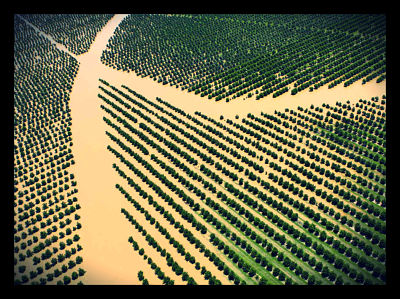Flood Resistant Grass Hybrid Can Create Food Security

The effects of flooding are catastrophic to agricultural production and soil efficacy due to the resulting root suffocation – via decreased oxygen availability in the soil – and accompanying topsoil erosion. Furthermore, as global weather patterns change and previously arid areas are exposed to unseasonably high annual rainfall, an increased emphasis is being focused into developing grasses that help to attenuate the impact of flooding. In a breakthrough that’s hypothesized to help bolster global food security in the face of unpredictable weather, a newly discovered flood resistant grass hybrid may shift the advantage towards local farmers.
The newly hybridized Festulolium species of grass, grown by a collaboration between UK researchers from Aberystwyth University, Lancaster University, and University of Nottingham, combines the impressive growth rate of ryegrass with the deep root systems of the meadow fescue grass.
How exactly does the flood resistant grass hybrid help to protect crops? By deploying the Festulolium grass in and around agricultural areas, the quick turnover and absorptive qualities of the hybrid grass help to decrease water run off by more than 51 %. Thus, the sensitive roots of the crops are protected from drowning as the Festulolium grass retains much of the water and serves as a barrier to flooding.
In regards to the newly developed food resistant grass hybrid, James Hutton Institute scientist Kit Macleod noted that, “Hybrid grasses of this type show potential for reducing the likelihood of flood generation, whilst providing pasture for food production under conditions of changing climate.”
Through the development of a flood resistant grass hybrid, a much needed ally in the fight against global climate change as been identified. And thanks to the continued research towards finding innovative methods of flood reduction and water retention, adequate levels of food security will be maintained despite the unpredictable effects of climate change.
– Brian Turner
Source Science Daily
Photo NPR
